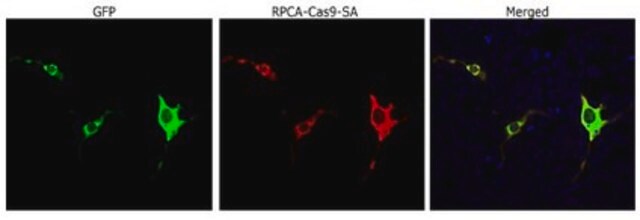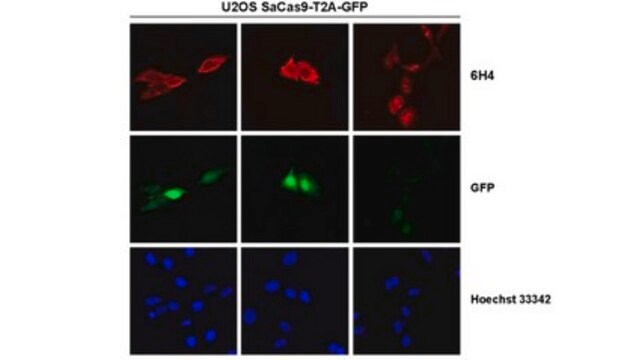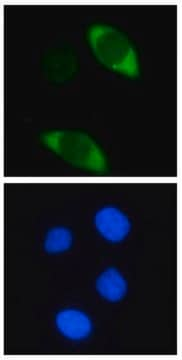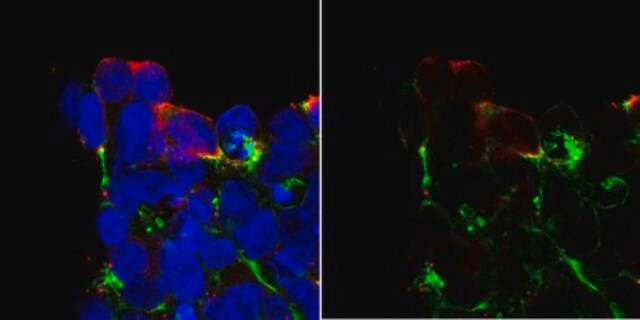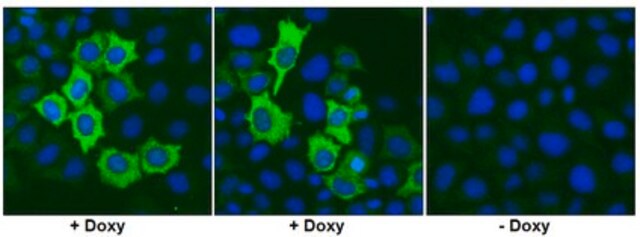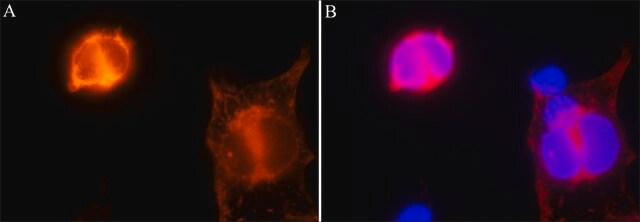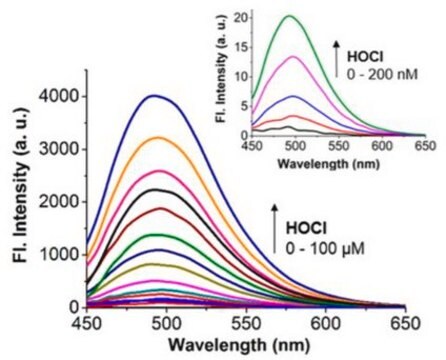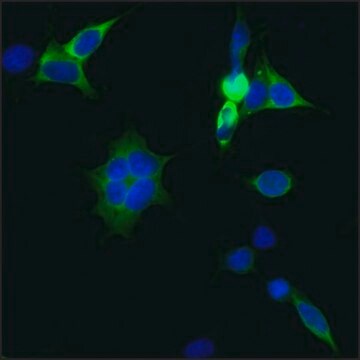General description
CRISPR-associated endonuclease Cas9 (UniProt: J7RUA5; also known as SaCas9) is encoded by the Cas9 gene (Gene ID: in Staphylococcus aureus. CRISPR (clustered regularly interspaced short palindromic repeat) is an adaptive immune system that provides protection against mobile genetic elements (viruses, transposable elements and conjugative plasmids). CRISPR clusters contain spacers, sequences complementary to antecedent mobile elements, and target invading nucleic acids. CRISPR clusters are transcribed and processed into CRISPR RNA (crRNA). In type II CRISPR systems correct processing of pre-crRNA requires a trans-encoded small RNA (tracrRNA), endogenous ribonuclease 3 (rnc) and this protein. The tracrRNA serves as a guide for ribonuclease 3-aided processing of pre-crRNA. Subsequently Cas9/crRNA/tracrRNA endonucleolytically cleaves linear or circular dsDNA target complementary to the spacer. Cas9 is inactive in the absence of the 2 guide RNAs (gRNA). Cas9 recognizes the protospacer adjacent motif (PAM) in the CRISPR repeat sequences to help distinguish self-versus non-self, as targets within the bacterial CRISPR locus do not have PAMs. PAM recognition is also required for catalytic activity. Cas9 endonucleolytically cleaves linear or circular dsDNA target complementary to the spacer. The target strand not complementary to crRNA is first cut endonucleolytically, and then trimmed 3′-5′ exonucleolytically.
Specificity
Clone 5F1 detects Cas-9 in Staphylococcus aureus.
Immunogen
Epitope: C-terminus
His-tagged recombinant Cas-9 from Staphylococcus aureus.
Application
Anti-Cas-9, C-terminal, clone 5F1, Cat. No. MAC141, is a mouse monoclonal antibody that detects Cas-9 in Staphylococcus aureus and its identity has been confimed by Isotyping Test and Western Blotting.
Research Category
Secondary & Control Antibodies
Western Blotting Analysis: A 1:1,000 dilution from a representative lot detected Cas-9 in HEK293/Cas9 from S. aureus or HEK293 (WT) cell lysates. (Courtesy of Stefan Schuchner, Ph.D. and Egon Ogris, M.D., Medical University of Vienna, Austria).
Quality
Identity Confirmation by Isotyping Test.
Isotyping Analysis: The identity of this monoclonal antibody is confirmed by isotyping test to be mouse IgG1 .
Target description
~124 kDa observed; 123.99 kDa calculated. Uncharacterized bands may be observed in some lysate(s).
Physical form
Format: Purified
Protein G purified
Purified mouse monoclonal antibody IgG1 in buffer containing 0.1 M Tris-Glycine (pH 7.4), 150 mM NaCl with 0.05% sodium azide.
Storage and Stability
Stable for 1 year at 2-8°C from date of receipt.
Other Notes
Concentration: Please refer to lot specific datasheet.
Disclaimer
Unless otherwise stated in our catalog or other company documentation accompanying the product(s), our products are intended for research use only and are not to be used for any other purpose, which includes but is not limited to, unauthorized commercial uses, in vitro diagnostic uses, ex vivo or in vivo therapeutic uses or any type of consumption or application to humans or animals.
